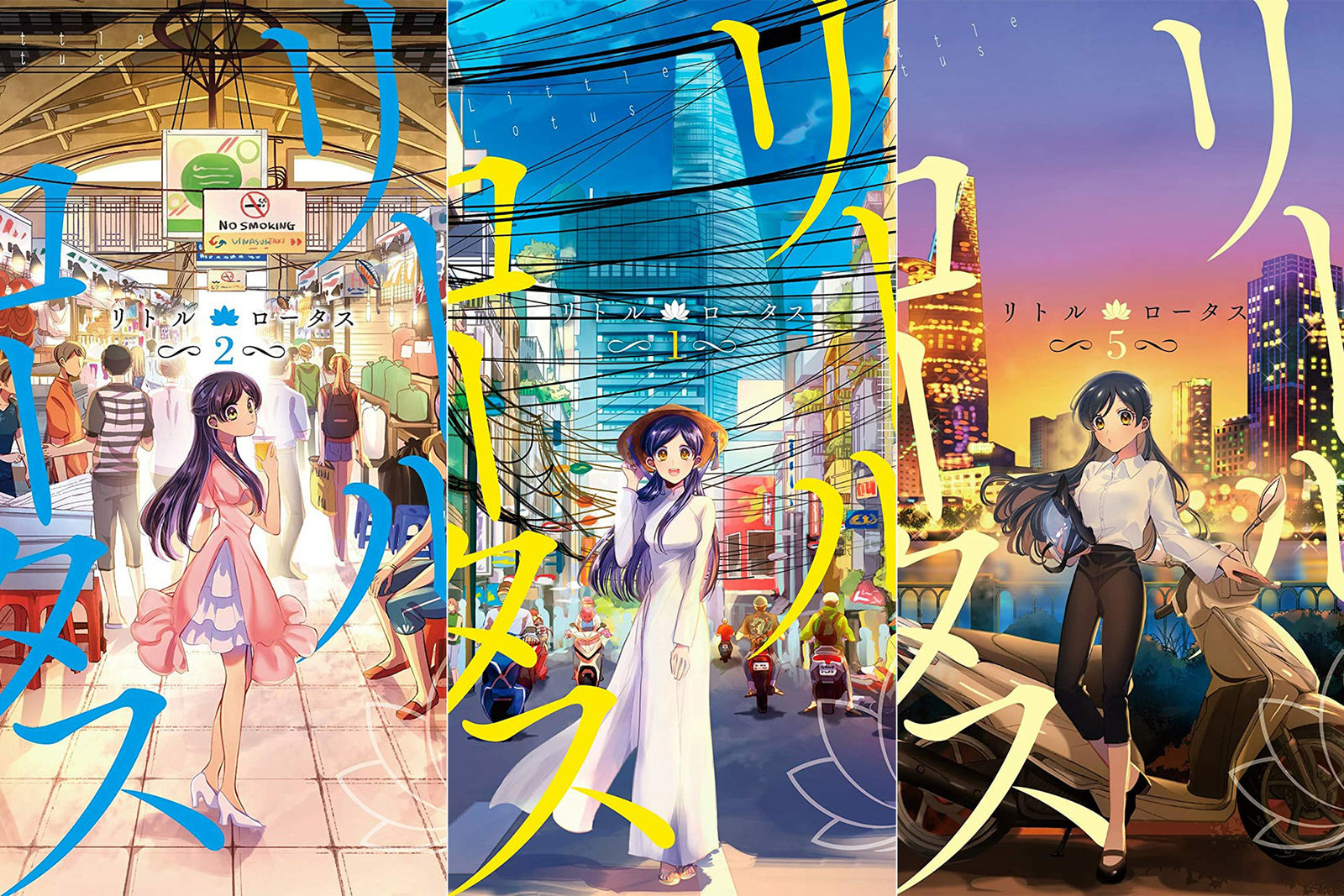Vtubers have been taking the global streaming industry by storm for several years now, with millions of fans that span the globe, even in Vietnam. Yet despite this obvious popularity, local Vtubers catering to a Vietnamese audience are only a recent phenomenon.
I spent about five hours last week watching a Vtuber play a horror game.
I’m not sure what it was about them that interested me so much. Was it their voice? Their humor? The way their streaming avatar lagged when they met a jump scare? Or was it the way they hilariously begged their viewers to collectively pray for their in-game survival?
Virtual YouTubers, also known as Vtubers, are content creators and online performers primarily found on Twitch and YouTube, who use a digital avatar instead of their real face. This digital avatar — either art commissioned from an artist or made by the Vtubers themselves — is rigged to follow the owner’s movements and facial expressions. It can be a 2D image animated using Live2D technology, or a 3D model. The latter is usually reserved for certain milestones during a Vtuber’s career, like reaching 100,000 subscribers because of how laborious and expensive it is to make.

There are now hundreds of Vtubers on the net, each with their own distinct backstory, personality and charm. Image via Nijisanji.
For all intents and purposes, Vtubers are the same as streamers and online vloggers, with a wide variety of content catered to different audiences. However, many Vtubers opt for activities that can be done on-screen to not reveal their body or real-life location. As such, gaming, chatting, singing and digital drawing are some of the most popular forms of content among Vtubers.
A virtual tradition from Japan
Vtubing started in Japan and became popular with the appearance of Kizuna Ai in 2016, who also coined the word “Virtual YouTuber.” Two years later, Vtuber agencies like Hololive and Nijisanji were established, pushing the trend to a global scale. Today, Vtubers have become a common sight on social media, with the most famous ones - like Gawr Gura - having over 3.5 million subscribers on YouTube as of this writing.
If this reminds you of famous Japanese virtual singer Hatsune Miku, then you’re closer than you think. The current Vtuber industry borrows many of its motifs and aesthetics from Japan’s idol culture. Despite being a global trend nowadays, many non-Japanese Vtubers still pay respect to the industry’s Japanese roots. Some major examples are the anime art style seen in many Vtubers’ character designs. As such, most fans and viewers of Vtubers are people who are already interested in Japanese or anime culture.

Kizuna Ai was one of the first Vtubers. Image via Virtual Human.
One of the most obvious benefits of having a digital avatar is that streamers enjoy a certain level of anonymity. Some Vtubers may not feel confident about their appearance, but the digital medium allows their inner charisma to shine. Having a made-up persona also means that many of these digital avatars come with a backstory of how they came to be, giving streamers the opportunity to really be creative with their characters’ looks and personalities, like a Shiba Inu, a cute demonic critter, a campy cross-dressing elf, or even...a gun.
Vietnamese Vtubers: who are they?
In Vietnam, the local fanbase for Japanese and English Vtubers is immense, with many channels on YouTube translating foreign videos for local viewers. In contrast, the local Vtuber scene is only a recent development, with observable growth beginning in 2020.

Chiêm Ch.'s Vtube avatar. Image courtesy of Chiêm.
On the first day of October back in 2020, YouTube was briefly graced by a 15-second birthday song sung by a girl in gray. That was Chiêm’s debut as a Vtuber in Vietnam. She declares herself a “fallen angel” who was banished and forced to sign a deal with the “devil” — who is conveniently her real-life friend/manager — to help her in her new life as an art and game streamer in the mortal plane.
Offline, she’s a bit different from her virtual persona; her shyness makes her seem distant from others. “Deep down, I still want that sense of connection, to become something special in someone’s life,” Chiêm shares. “So you could say becoming a Vtuber is an indirect way for me to be more confident in myself.”
The streamer chose to hide behind the character “Chiêm” because she “wanted people to know ‘Chiêm’ for [her] personality and content, instead of letting them judge [her] through appearances alone.” Like other Vtubers, a fondness for Japanese culture is key to Chiêm’s genesis as well.
“I also like manga, anime culture and the virtual idols that are prevalent in Japan,” she explains. “So becoming a virtual character myself might give viewers the impression that ‘Ah, this person must like Japanese culture,’ and then I’ll have more chance to connect with others who share the same interest as me”
Chiêm’s content varies from time to time. Sometimes she plays co-op games like Among Us with fellow Vietnamese Vtubers, has casual hang-out nights when viewers can chat about anything, or hosts art streams in which she draws her Vtuber self and fan art of other Vtubers. But a common theme of the activities is the close bond between the host and guests.
Chiêm's avatar singing 'Happy Birthday.'
“A few people [in real life] know I moonlight as a Vtuber, a few don’t. But it’s not anything to hide, so I’m open-minded about it,” Chiêm says. “Most of them were quite surprised but are still supportive, so in the end, I feel really lucky to have the support from others regarding my new direction.”
In an industry where most Vtubers pose as ageless abominations, mythical creatures, supernatural beings, or just plain-old catgirls, Jortun Leventor, affectionately localized as "Lê Văn Tèo" by fans, has a hilariously tame backstory as a green-haired heartthrob who was “kidnapped” into becoming a Vtuber by 3Di Project, an indie Vtuber group led by a band of ambitious friends. Leventor previously appeared with a surfer-themed avatar, but has recently received a makeover to become a pirate.
Jortun Leventor's new model.
Leventor’s content focuses on gaming streams with no restriction on genre, from light-hearted Stardew Valley to hardcore shooters like Doom Eternal and Apex Legend. His channel is also peppered with occasional free talk streams where he and viewers discuss anything of interest, as well as some occasional shenanigans, be it meme videos or co-op games with his two other stream-mates: Vtubers Minh Nguyệt and Vici, both affiliated with 3Di Project. The trio is fittingly nicknamed “Đèn Giao Thông” (Traffic light), a nod to the color motifs of their virtual personae.

Jortun Leventor. Image courtesy of 3Di.
Anxiety is a universal feeling that comes with anyone’s first time doing anything, and Leventor was no exception. Technical and performance problems were worrying “what-ifs” at the beginning, but Leventor now feels at home on his stream thanks, in part, to the dedication of his fans. “To me, my fans are wonderful, wholesome, and humorous. Once in a while, they even help me remind new viewers on streams of the chat rules, making sure they don’t affect other people’s viewing experience,” Leventor gushes.
When asked about one of the more unique experiences that he has had, he shared: “One of the most memorable moments has to be the four flag salutation [chào cờ] streams between last August and September. Back then the lockdown was still in effect, National Day and the first day of (online) school were coming near, so I wanted to do some Monday morning flag salutation, singing the National Anthem with my followers who can’t go to school. I assumed that there wouldn’t be many people since it was an early morning stream, but it turned out to be very crowded and lively. I even invited some of my friends in 3Di to sing with me, but because we were singing through Discord, the sound got delayed, so none of us were in sync with each other,” he laughs.
A morning flag salute stream with Jortun.
The pros and cons of a small, close-knit community
As a solo Vtuber, Chiêm has to create content and promote her streams through social media, among other internet-related tasks, but she says the most difficult part of the hobby is keeping her viewers engaged.
When asked if it’s mainly her personality and humor that attract viewers, the streamer said that it depends: “Everyone came into my stream for a different reason, but those could be the main qualities one needs to be mindful of while streaming. Still, I have lost some loyal fans without knowing why, but as a content creator aiming to be more professional, I try my best not to doubt myself too much or go after them for dropping off. Instead, I focus on creating more content to develop my channel further.”

A screenshot from a stream by Chiêm.
As one of the few men in a largely female industry, Jortun Leventor does feel out of place at times: “My viewership is mainly women. So I had to do some adjustments in the way I speak, like talking a bit more gently. In reality, however, I’m taken aback most of the time because their reaction can be very…passionate!”
Leventor continued: “In the local Vtuber scene, women Vtubers are the majority, so when I debuted there were some odd reactions. I was worried because I was not sure if me and my content would fit in with others or not; it’s quite lucky that I got accepted and supported by fans in the end.”
“Usually, creating assets for streaming can be a bit pricey for most independent Vtubers, so I’m very lucky to have 3Di’s support…Tasks like drawing the Vtuber model, rigging the Live2D model [to get the model to animate], creating the streams’ layout, etc. are divided among everyone, we actively discuss and help each other out, so there aren’t many financial problems that we have to deal with,” Leventor shares.
Looking forward
As of now, the local industry is still in its early stages, with new faces appearing every day. There are criticisms of it straddling the line between awkwardly charming and cringe-inducing for Vietnamese viewers, who were used to Japanese- and English-speaking Vtubers up until now. But to Chiêm, this is a problem that time will fix.
“It’s true that I’ve seen some articles and videos bashing Vietnamese Vtubers…I think that these critics’ perspectives are a bit too affected by their negative perception of the word ‘Vtuber,’ simply because it’s a big international trend right now,” she opines. “In reality, being a Vtuber is nothing more than being a typical content creator or streamer, something that’s already prevalent in Vietnam.”
Minh Nguyệt, another Vtuber from 3Di, also recently got an update to her Vtuber model.
Both Chiêm and Leventor are hopeful about the industry’s potential, as more Vtubers, both solo and groups, that create high-quality content are getting into the media landscape. This gives Chiêm the motivation to further improve so she can stand out in this developing ecosystem. As for Leventor, the green-haired streamer and his crew will have a meeting with fans at this year's Color Fiesta, one of the biggest conventions in Vietnam for local artists and anime enthusiasts.
Putting aside the novelty of animated streamers, I’m always happy to see people who found their calling, and if Vtubing can help those with social anxieties or concerns about their appearances to become the content creators they have always dreamt of being, then who are we to judge? The scene is still very young, but give it some time and it will surely flourish. In the meantime, I’ll be rooting for both Chiêm and Leventor’s success, hoping that one day I will see English fansubs of Vietnamese Vtuber content creators, a sign that local streamers are getting the attention of the world.















